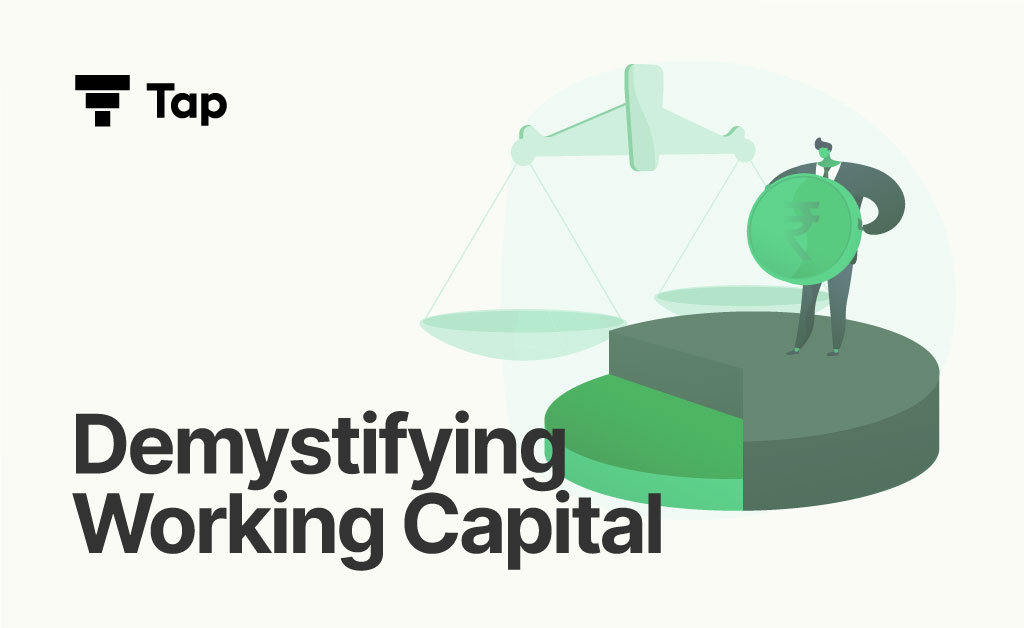Demystifying Working Capital: A Comprehensive Guide for Businesses

In business finance’s intricate landscape, working capital is a cornerstone for operational continuity and growth. This comprehensive guide aims to illuminate the essence of working capital, delineate its various types, explore diverse sources, and elucidate the advantages and disadvantages inherent in its financing. Moreover, it sheds light on tailored strategies for small businesses to effectively harness the power of working capital.
Understanding Working Capital:
Working capital, often denoted as net working capital (NWC), epitomises the financial foundation of a business. It represents the disparity between a company’s current assets and liabilities, which is a pivotal metric for assessing liquidity and short-term financial robustness.
Sources of Working Capital:
1. Internal Sources:
– Retained Profits: Accumulated earnings retained within the business and reinvested to support ongoing operations.
– Accumulated Depreciation: The portion of asset value depreciated over time, which can be leveraged as working capital.
2. External Sources:
Short-Term Sources:
– Loans from Commercial Banks: Short-term loans extended by commercial banks to finance immediate operational needs, often secured against collateral.
– Public Deposits: Funds raised from the public through deposits, typically offering higher interest rates compared to traditional bank deposits.
– Trade Credit: Credit extended by suppliers or creditors to facilitate purchases of goods or services on deferred payment terms.
– Bill Discounting: Discounting of accounts receivable or bills of exchange to secure immediate cash flow by selling outstanding invoices to financial institutions at a discount.
– Bank Overdraft: An agreement with a bank allowing businesses to withdraw funds exceeding their account balance, providing flexibility in managing cash flow.
– Advances from Customers: Prepayments received from customers for goods or services, serving as a source of short-term financing without incurring interest expenses.
– Commercial Paper: Unsecured, short-term debt instruments issued by corporations to raise funds for working capital needs.
Long-Term Sources:
– Share Capital: Capital raised by issuing shares to investors, representing ownership stakes in the company.
– Long-Term Loans: Loans with extended repayment periods, often used to finance large-scale projects or capital investments.
– Debentures: Fixed-interest debt instruments issued by companies to investors, typically secured against company assets.
– Equity Funds: Funds raised by issuing equity securities, such as common stock, to investors in exchange for ownership interests.
Advantages and Disadvantages of Working Capital Financing:
– Short-term financing offers flexibility in managing cash flow and addressing immediate needs but may entail higher interest costs.
– Long-term financing provides stability and security for future growth initiatives but may lead to higher overall financing costs over time.
– Balancing the advantages and disadvantages enables businesses to make informed decisions regarding working capital financing options.
Working Capital for Small Businesses:
– Vendor and Trade Sources: Negotiating favorable credit terms with suppliers to extend payment deadlines and improve cash flow.
– Working Capital Loans from Traditional Lenders: Establishing relationships with banks and non-banking financial institutions (NBFCs) to secure affordable financing tailored to small business needs.
– Leveraging Overdraft Facilities: Utilizing overdraft facilities provided by banks to access short-term funding for operational expenses and contingencies.
Conclusion:
A strong working capital is the life-blood of any thriving business, facilitating day-to-day operations and fueling growth aspirations. Leveraging diverse financing sources helps businesses counter the complexities that prevails in working capital management. This way, businesses can strengthen their financial resilience and seize opportunities for sustained success in the ever-evolving market environment.
To explore the world of elite fixed income investing, sign up today on TapInvest!
FAQs:
1. What do you mean by working capital financing?
– Working capital refers to the difference between a company’s current assets and current liabilities, serving as a key indicator of liquidity and short-term financial health.
2. What are the types of working capital?
– The types of working capital encompass permanent, regular, reserve margin, variable, seasonal variable, special variable, gross, and net working capital, each serving distinct functions in financial management.
3. What is the source of working capital?
– Working capital can be derived from internal sources such as retained profits and accumulated depreciation, as well as external sources including loans from commercial banks, trade credit, public deposits, and equity financing.
4. What are the components of working capital?
– The components of working capital include accounts receivable, accounts payable, inventory, and cash and bank balances, collectively shaping the liquidity position of a business.
- How do you calculate working capital?To calculate working capital, subtract a company’s total current liabilities from its total current assets.
